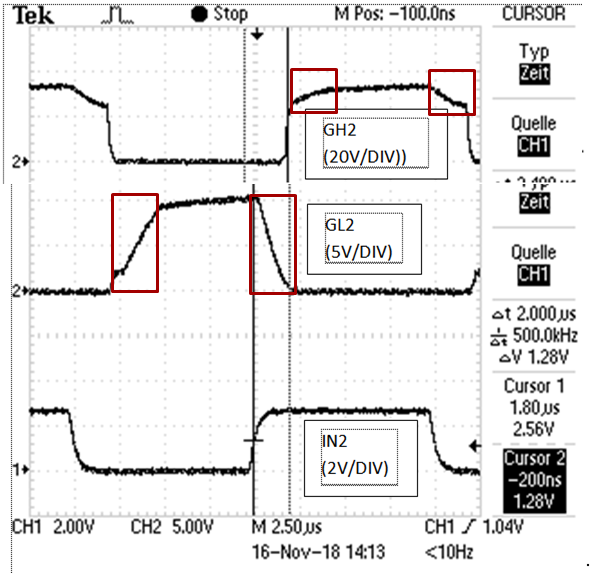Hello James
I will check this, thank you.
Other question: Why ist the delay between the rising edge on IN2 to the ouptut rising edge about 5us?
The same is from IN2 to GH2 and also when driving the IN2 directly without any resistor in series.
The datasheet specifies a propagation delay of 500ns.


